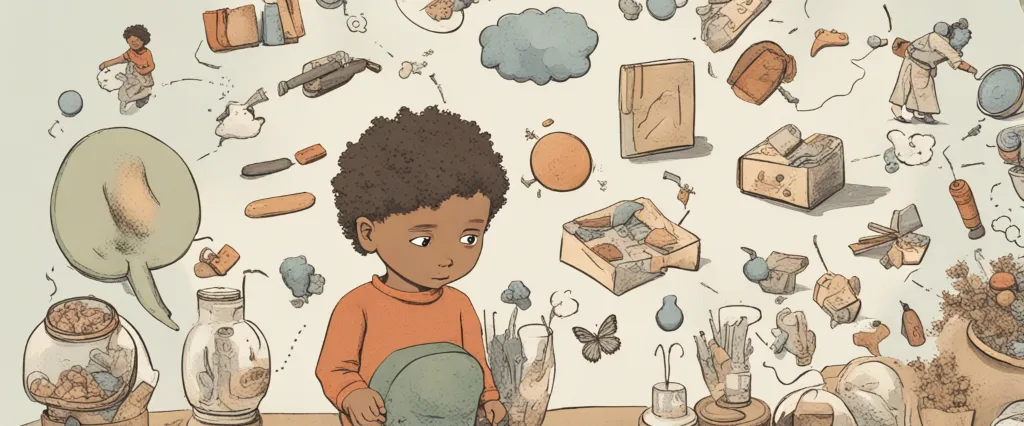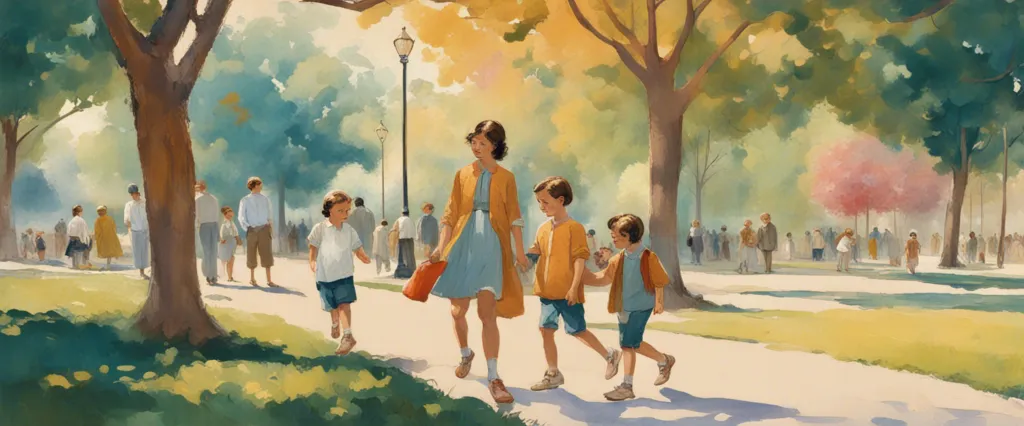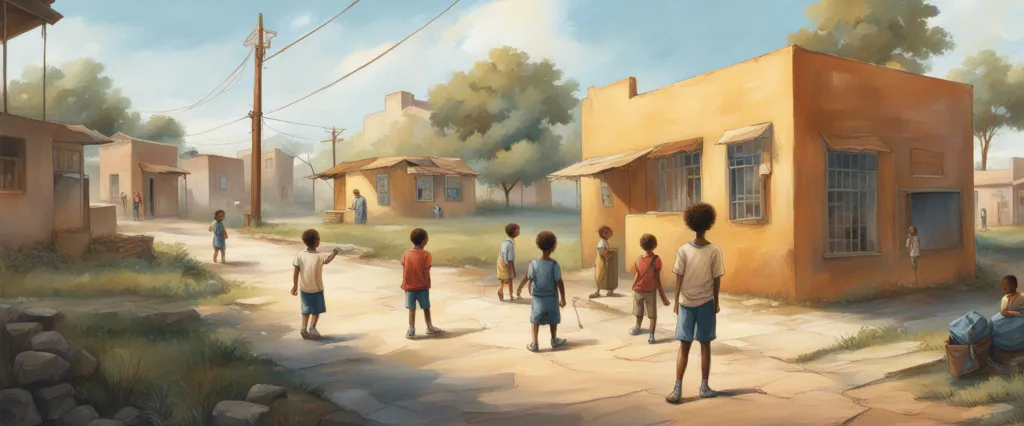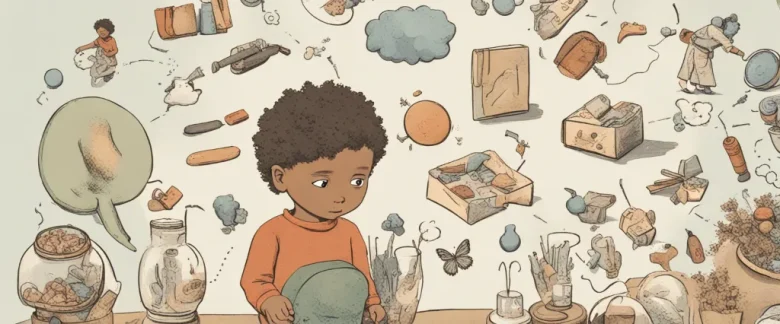
In her groundbreaking book, “Unequal Childhoods: Class, Race, and Family Life,” Annette Lareau shines a spotlight on the ways in which social class shapes the experiences and opportunities of children in America. With meticulous research and insightful analysis, Lareau provides a captivating exploration of the vastly different paths taken by children from different socioeconomic backgrounds. Her work highlights the unequal distribution of resources and the ways in which this perpetuates social stratification. Annette Lareau is a sociologist and professor at the University of Pennsylvania, known for her extensive research on the sociocultural factors that impact childhood development and the reproduction of inequality in society. Through her interdisciplinary work, Lareau seeks to unravel the complexities of class, race, and family dynamics, shedding light on the intricate mechanisms that contribute to social inequality.
Chapter 1: The Socialization of Class
Chapter 1: The Socialization of Class, in the book “Unequal Childhoods” by Annette Lareau, examines how social class affects the upbringing and socialization of children. Lareau conducted a longitudinal study, observing the lives of 88 children from both white and black families of differing socio-economic backgrounds in the United States.
The chapter begins by highlighting the stark contrast in parental involvement and child-rearing strategies between the two social classes. The working-class and poor families, who Lareau refers to as “the Accomplishment of Natural Growth” or ANG, practice a more hands-off approach to child-rearing. They emphasize the importance of allowing their children to develop naturally, often letting them be more independent in decision-making and problem-solving.
In contrast, middle-class families, referred to as “Concerted Cultivation” (CC), actively organize their children’s lives, providing them with numerous organized activities, enforcing strict schedules, and fostering a sense of entitlement to engage with institutions such as schools and doctors. Middle-class parents advocate for their children’s needs and encourage them to negotiate within bureaucracies.
Lareau explores the impact of these differing approaches on children’s experiences in school and other institutions. She describes how CC children, due to their structured upbringing and developed sense of entitlement, are more comfortable interacting with authority figures and engaging in social institutions. On the other hand, ANG children often struggle with navigating these environments because they lack the necessary strategies and skills learned through concerted cultivation.
Overall, the chapter sets the stage for the rest of the book, demonstrating how social class shapes parental practices, which, in turn, influence children’s experiences, opportunities, and outcomes in different social institutions. The study highlights the unequal childhood experiences and the importance of understanding how social class can impact a child’s life trajectory.
Chapter 2: The Organization of Daily Life
Chapter 2 of “Unequal Childhoods” by Annette Lareau explores how children’s daily routines and activities are organized within their families, examining the contrasting patterns of childrearing between middle-class and working-class families. Through extensive interviews and observations, Lareau reveals how these different approaches impact children’s development and future opportunities.
Lareau introduces the concept of “concerted cultivation,” the parenting style prevalent among middle-class families. In such households, parents intentionally structure their children’s lives through numerous organized activities and elaborate schedules. These activities often include sports teams, music lessons, and various classes. The goal of concerted cultivation is to develop children’s talents and enhance their cultural capital, preparing them for success in the competitive adult world. Middle-class parents actively engage in their children’s lives, often fostering a sense of entitlement and self-assuredness.
On the other hand, working-class and poor families exhibit a parenting style Lareau calls “the accomplishment of natural growth.” In these households, children’s daily routines are less structured and revolve around more spontaneous and unorganized play. Parents prioritize their children’s safety and focus on providing their basic needs rather than orchestrating extracurricular activities. This approach allows children more autonomy and requires them to navigate social spaces independently.
Lareau argues that concerted cultivation gives middle-class children advantages in terms of language development, critical thinking abilities, and resources for success. They learn to negotiate with adults, cultivate social connections, and develop a sense of entitlement during their interactions. In contrast, children from working-class and poor families tend to have limited exposure to formal language and must rely on their supportive families and communities for their social development.
Overall, Chapter 2 underscores the impact of parenting styles on children’s lives and proposes that concerted cultivation perpetuates social inequalities by reinforcing the advantages of the middle class and limiting the opportunities of those from working-class and poor backgrounds.
Chapter 3: Language Use and Communication
Chapter 3 of the book “Unequal Childhoods” by Annette Lareau focuses on language use and communication in different social classes. Lareau explores the differences in language patterns, skills, and strategies among children from middle-class and working-class backgrounds.
She begins by highlighting the classic distinction between concerted cultivation and the accomplishment of natural growth parenting styles. Middle-class parents emphasize the importance of language and constantly engage their children in conversations. They encourage critical thinking, negotiation, and assertiveness, which are reflected in their children’s vocabulary and conversational skills.
In contrast, working-class parents prioritize the accomplishment of natural growth and tend to use directives and simple language when communicating with their children. They rely more on natural consequences for discipline rather than active engagement in conversations. Due to limited exposure to extensive vocabulary and complex sentence structures, working-class children often lag behind in language development.
Lareau also explores the role of schools in perpetuating these social class differences in language. Middle-class children, who are already more comfortable with the language of authority and negotiation, navigate the school environment effectively. They maintain their assertiveness, ask questions, and advocate for themselves. On the other hand, working-class children struggle to adapt to the middle-class language expectations of school, often resulting in a mismatch between their home and school language patterns.
Overall, Chapter 3 highlights how language use and communication styles differ between middle-class and working-class families. These differences in parenting styles and educational environments contribute to the reproduction of social inequality, as middle-class children are better equipped with the communicative skills necessary for success in school and future endeavors.
Chapter 4: Childrearing Beliefs and Practices

Chapter 4 of “Unequal Childhoods” by Annette Lareau focuses on the childrearing beliefs and practices of different social classes in the United States. Lareau argues that social class plays a significant role in shaping the ways in which parents raise their children and the opportunities available to them.
The chapter begins with a comparison of how middle-class and working-class parents approach parenting. Middle-class parents tend to emphasize the development of independence, self-expression, and negotiation skills in their children. They encourage their children to question authority and provide them with various enrichment activities, such as music lessons or sports, to broaden their interests and cultural capital. These parents also engage in “concerted cultivation,” actively involving themselves in their children’s lives and advocating for their interests.
On the other hand, working-class and poor parents focus on providing their children with a sense of constraint and obedience. These parents tend to prioritize discipline, respect for authority, and conforming to rules and traditions. They believe that their children should accept the directives of adults and teachers without questioning them. Additionally, they rely on “natural growth,” allowing their children to develop on their own without actively intervening or enrolling them in extracurricular activities.
Lareau argues that these differing parenting approaches have consequences for children’s development and future opportunities. Middle-class children, through the resources, skills, and confidence they acquire, are more likely to succeed in the highly structured and competitive institutions they encounter later in life, such as schools and workplaces. Meanwhile, working-class and poor children may struggle to adapt to the demands of these institutions, hindering their chances of social mobility.
Overall, this chapter emphasizes the role of social class in shaping childrearing beliefs and practices, and how these differences contribute to the perpetuation of social inequality.
Chapter 5: The Role of Institutions
Chapter 5 of Unequal Childhoods by Annette Lareau explores the role of institutions in shaping the lives and opportunities of children from different social classes. Lareau defines institutions as “social arrangements that structure social life” and argues that these institutions play a significant role in perpetuating and reinforcing social inequality.
The chapter begins by examining the role of schools in the lives of the children in Lareau’s study. She analyzes how different parenting styles and cultural assumptions affect the ways parents and children interact with schools. Middle-class parents engage in a process Lareau terms “concerted cultivation,” actively navigating and advocating for their children within the school system, providing them with a sense of entitlement and promoting their ability to articulate their needs and concerns. In contrast, working-class and poor parents employ a strategy of “natural growth,” relying on the school to dictate their child’s education without questioning or challenging it. This difference in parenting styles contributes to the unequal treatment of children within schools and perpetuates social class divisions.
Lareau also examines other institutions such as extracurricular activities, religious organizations, and healthcare. She finds that middle-class children have access to a wider range of opportunities and resources, allowing them to develop skills, networks, and confidence that are essential for success. On the other hand, working-class and poor children have limited access to these extra-institutional activities, hindering their ability to acquire and develop similar advantages.
Overall, the chapter emphasizes that institutions play a pivotal role in shaping the opportunities, experiences, and outcomes of children from different social classes. The unequal distribution of resources and types of interactions within these institutions contributes to the perpetuation of social inequality. Lareau argues that recognizing and challenging these institutional disparities is crucial to achieving a more equitable society.
Chapter 6: The Influence of Social Networks
Chapter 6 of “Unequal Childhoods” by Annette Lareau explores the role of social networks in shaping the lives and opportunities of children from different social classes. Lareau highlights how social networks connect individuals with resources that can either advantage or disadvantage them, contributing to social inequalities.
Lareau begins by discussing the impact of social networks on one aspect of children’s lives – extracurricular activities. She reveals that middle-class children have access to a wide range of organized activities due to their parents’ social connections. These activities not only provide opportunities for skill-building but also enhance cultural capital and social status. On the other hand, working-class and poor children often have limited access to such activities, partly due to their families’ limited social networks.
The author emphasizes the significance of social networks for parents as well. Middle-class parents rely on extensive networks of friends, family, and acquaintances to gather information and support regarding child-rearing, education, and various other aspects of their lives. Such networks enable them to make informed decisions and secure advantages for their children. In contrast, working-class and poor parents have narrower networks, restricting their access to valuable information and support.
Lareau also examines how social networks influence children’s educational experiences. Middle-class students benefit from their parents’ social connections, which provide them with access to influential people such as teachers, principals, and other professionals in the education system. These connections often result in favorable treatment, additional resources, and a more positive school experience. In comparison, working-class and poor students lack such influential connections, leading to fewer advantages and potential disadvantages within the educational system.
Overall, Chapter 6 of “Unequal Childhoods” highlights how social networks shape children’s opportunities and experiences. The unequal distribution of social connections contributes to the perpetuation of social inequalities, granting middle-class children access to a wide range of advantages, while working-class and poor children face limitations due to their narrower networks. It emphasizes the importance of recognizing the role of social networks in understanding and addressing the patterns of inequality in society.
Chapter 7: Educational Strategies and Outcomes
Chapter 7 of the book “Unequal Childhoods” by Annette Lareau focuses on the educational strategies and outcomes of working-class and middle-class families in the United States. Lareau’s research aims to shed light on how social class impacts the way parents raise their children and the advantages or disadvantages they experience in educational settings.
Lareau presents two primary educational strategies employed by parents from different social classes. Middle-class parents engage in a style of parenting known as “concerted cultivation,” where they actively foster and develop their children’s skills and talents through structured activities, organized sports, and extensive interaction with institutions such as schools and museums. On the other hand, working-class and poor parents practice a style called “natural growth,” characterized by allowing their children more independence and unstructured time to play and explore their interests.
The outcomes of these distinct parenting strategies have significant implications for educational success. Children exposed to concerted cultivation tend to develop a sense of entitlement and assertiveness. They are more comfortable interacting with adults and are better equipped to navigate institutions like schools. This results in them having more advantageous opportunities within the education system. In contrast, kids exposed to natural growth obtain skills such as negotiation, independence, and creativity, but they may lack the confidence or familiarity to assert themselves within formal educational settings.
Importantly, Lareau contends that these different approaches to parenting are not solely due to individual choices or preferences; rather, they are deeply rooted in social class and the resources available to families. Middle-class families tend to have more financial stability and cultural capital, allowing them to invest in their children’s education more actively. Meanwhile, working-class and poor families face economic constraints and may prioritize meeting basic needs over intensive engagement in their children’s education.
Overall, Chapter 7 of “Unequal Childhoods” underscores the significant impact of social class on parenting strategies and educational outcomes, highlighting the unequal opportunities available to different social groups within the American education system.

Chapter 8: Consequences of Unequal Childhoods
Chapter 8 of “Unequal Childhoods” by Annette Lareau explores the consequences that arise from the unequal upbringing and distinct social classes observed throughout the book. The chapter sheds light on how these different childhood experiences impact children’s future opportunities, achievements, and life outcomes.
Lareau begins by discussing the diverging paths that children from different social classes tend to take. She highlights that middle-class children, with their concerted cultivation upbringing, are more likely to develop a sense of entitlement and self-confidence. They possess a well-rounded set of skills, such as effective communication, negotiation abilities, and assertiveness, which are highly valued in schools and workplaces. Consequently, they have a higher likelihood of securing good job prospects and achieving socioeconomic mobility.
On the other hand, working-class and poor children, who experience the accomplishment of natural growth, often face challenges in educational institutions due to their less assertive demeanor and limited exposure to institutional norms. They might struggle to fit into the academic environment, resulting in lower academic achievements and potential limited opportunities later in life. Moreover, due to the lack of social networks and connections, these children often find it harder to secure lucrative jobs or access desirable social opportunities.
The chapter also emphasizes how class-based differences in parenting styles can create disparities in children’s health outcomes. For instance, middle-class parents have more resources to invest in their children’s physical well-being, which may include better healthcare, nutrition, and access to recreational facilities. As a consequence, middle-class children tend to have better overall health and longevity compared to those from working-class and poor backgrounds.
Overall, Lareau argues that these disparate childhood experiences have profound implications for children’s future lives, perpetuating social inequalities. The mechanisms through which advantages and disadvantages are transmitted vary, ranging from access to education, health, jobs, and social connections. The chapter serves as a reminder of the lasting consequences of unequal childhoods and emphasizes the urgent need to address these disparities to create a more just and equitable society.
After Reading
In “Unequal Childhoods” by Annette Lareau, the author explores the impact of social class on children’s lives by studying the experiences of families from different socioeconomic backgrounds. Through her research, Lareau uncovers the disparities in parenting styles, educational opportunities, and social networks between upper-middle-class and working-class families. She argues that these variations result in unequal outcomes for children, with wealthier families having a distinct advantage in terms of securing educational and occupational success. Ultimately, Lareau’s work raises important questions about the role of social class in shaping individuals’ life trajectories and calls for a more equitable society that provides equal opportunities for all children, regardless of their socioeconomic background.
1. “The Spirit Level: Why Greater Equality Makes Societies Stronger” by Richard Wilkinson and Kate Pickett – This book delves into the detrimental effects of income inequality on society. It provides compelling evidence and arguments to support the idea that more equal societies lead to improved health and well-being for all citizens.
2. “Evicted: Poverty and Profit in the American City” by Matthew Desmond – In a similar vein to “Unequal Childhoods,” this book examines the struggles faced by low-income families, focusing particularly on the issue of eviction. Desmond offers a powerful and empathetic portrayal of the impact of housing instability on individuals and communities.
3. “The New Jim Crow: Mass Incarceration in the Age of Colorblindness” by Michelle Alexander – This thought-provoking book explores the unsettling connections between the criminal justice system and racial inequality in America. Alexander argues that the current system perpetuates a new form of racial control by disproportionately targeting and disenfranchising black individuals.
4. Capital in the Twenty-First Century” by Thomas Piketty – Piketty’s groundbreaking work examines the dynamics of wealth and income inequality over time. Drawing on extensive research, he presents a comprehensive analysis of the historical and future trajectories of capitalism, shedding light on the fundamental imbalances within modern economies.
5. Nickle and Dimed: On (Not) Getting By in America” by Barbara Ehrenreich – In this eye-opening memoir, Ehrenreich exposes the hardships faced by low-wage workers in America. Through her own firsthand experiences, she reveals the daily struggles, financial insecurities, and the harsh realities of living on the brink of poverty.



